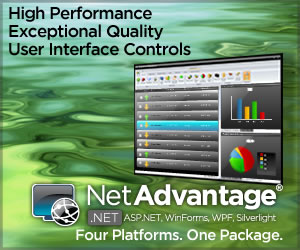Software Arrival Prompts Paper Departure at Global Aerospace
- Friday, April 1, 2005, 12:00
- Special Features
- Add a comment
 From satellites to hot air balloons, if it is related to aviation anywhere in the world, Global Aerospace will insure it.
From satellites to hot air balloons, if it is related to aviation anywhere in the world, Global Aerospace will insure it.
“In the U.S., we do everything from satellites to airlines, product manufacturers such as Boeing, helicopters, airfields, and air traffic control,” said Mark Chapman, the company’s chief technology officer. “If it can fly or it can help somebody fly, we could insure it.”
This means communicating with agents across the globe, which once meant burning up fax machines and generating lots of paper. But now the company uses Microsoft-based software from Wildnet, which has cut the paper, sped up processing, and made life easier for agents and headquarters staff alike.
“Our first U.S. system from Wildnet went live in 2002, and we have seen a huge improvement for ourselves and our agents,” said Chapman. “The agents can now log onto the Web site, get a quote, and if they are happy with it they can bind it online and then we send the documentation out in the post.”
But even the postal step is set for elimination.
“We will enhance the product in the first half of this year to allow us to email the policy documentation to the brokers, so we can even eliminate that final step,” Chapman said.
Backed by Berkshire Hathaway, Munich Re and others, Global Aerospace has a history stretching back over 70 years. The company attracts a talented professional staff with deep experience in aviation and insurance. Now with Wildnet, the experts can spend more time on risk assessment and client service and less time on paperwork.
“In the past we used quite a variety of computer systems,” added Chapman, “but paper predominated. The whole process was bound down by paper.”
By moving to Wildnet for its light aircraft business, Chapman said that Global Aerospace was able to go from about 23 computer systems to just four, and eliminate much of the paper. By providing Web access, brokers now do much of the work that Global Aerospace clerks used to do, sharply improving efficiency and enabling the company to adapt quickly to changes in the marketplace.
“Now the brokers can log onto the system themselves, get a quote, bind the policy, and request endorsements. Then all that information flows through into the back-office accounting and reporting systems with a minimal amount of re-entry — by and large with none at all,” explained Chapman. “Wildnet has been very successful at turning what was a quite inefficient and paper-bound system into one that is very highly efficient, permitting us to react quickly to market changes.”
Although it had made extensive use of Java, Global Aerospace is moving to .NET with Wildnet. “We have been a Microsoft customer for many years,” explained Chapman. “We have Microsoft on the desktop and on the server and we have been very pleased with their performance. When we looked at our Internet trading systems, we discovered that the technology is remarkably immature. Although the systems have given us great benefit, it came at quite a cost. It takes a lot of time, money, and effort to put these systems together, and the technology we have been using for these systems isn’t that responsive. When we have a business change that we need to make quickly, it takes far longer on the Internet trading systems than in a Windows-based environment. The benefit of .NET is that the technology promises a faster and lower cost development route, similar to Windows-based systems, which will allow us to respond far better to business changes. And if you hope to be Number One, you need to respond quickly.”
Mark Birrell, CEO of Wildnet, said that technical debates over Java vs. .NET have largely subsided as .NET’s business advantages have become clear.
“.NET is Microsoft technology, and Microsoft is in the workplace. Plus, a lot of people say it is easier to code in .NET, and easier to maintain as well,” said Birrell. “Customers are more interested in getting their processes sorted out than in the technology. As a business, Wildnet is recognized for our insurance industry knowledge, and being able to implement that at the end of the day is what companies care about. And we are putting our vertical insurance industry expertise onto standard Microsoft software, including .NET and new offerings like Sharepoint.”
Global Aerospace is using Microsoft Sharepoint Server for collaboration internally as a simple way to meet new regulatory requirements.
“Sharepoint has come out of nowhere in a very short time,” said Chapman. “It is a remarkably easy to use piece of software.” Sharepoint comes with Windows Server 2003 at no extra charge, and Global Aerospace plans to get great use of it with virtually no modification.
Responding to a series of losses through insured pensions, the Financial Services Authority, Britain’s financial regulator, took over regulation of the insurance agency in mid-January.
“They are very keen on documentation,” noted Chapman, “and they want to make sure we are managing our documentation and underwriting procedures.” Global Aerospace is storing all its documentation on its internal network and making it available to users through Sharepoint services as an intranet site.
“We are putting our knowledge capital in a single location where our people can use it, and where the regulators can see it. We have access controls and can maintain a history of changes, and that is what they are looking for,” added Chapman. “Sharepoint is a very flexible piece of software right out of the box, and it is free and easy to set up. It is good to get something from Microsoft that is very functional and flexible and quite user friendly.”
www.global-aero.co.uk
www.wild.net
- Share
-
 Print This Post
Print This Post






